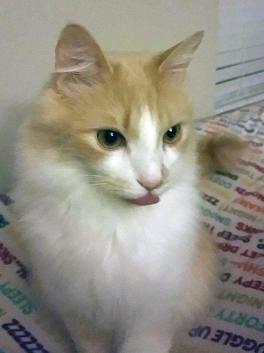Hi! I’m Robin Bagley, a new assistant professor in the Department of Evolution, Ecology, and Organismal Biology and the OSU Lima campus. I joined the team in August 2020. It’s been quite a time to start a new job, but I’m very excited to be here!
I’d describe myself as both an evolutionary ecologist and population geneticist, and my research seeks to understand how biodiversity is generated and maintained in insect systems. Specifically, I am interested in how changes in host use drive diversity in plant-feeding insects, and if and how differentiation at the plant-insect trophic level radiates through, and in turn is impacted by, interactions with other trophic levels. To answer these questions, my lab will take an integrative approach that evaluates genotypic and phenotypic data in the context of available natural history and environmental information.
The insect system at the center of my lab’s research is Neodiprion, a Holarctic genus of pine sawflies. Despite the name, sawflies are not flies at all – they are actually member of the order Hymenoptera, which also includes ants, bees, and wasps. They get their name from the shape of the female’s egg-laying organ, which are literally shaped like tiny saws! I am often asked if they sting (they do not), and in fact if you saw an adult sawfly you probably wouldn’t recognize it as a relative of a bee or a wasp as they lack the characteristic “wasp waist” associated with other hymenopterans. You are more likely to have encountered larval sawflies (especially of Neodipron) and may have thought it was a caterpillar. A close look at the body can distinguish them, however – sawfly larvae have 6 or more prolegs, while caterpillars have 5 or less.
Neodiprion is a great model system for studying adaptation and speciation. Species vary in many ecologically interesting characteristics, such as body color, spotting patterns, gregariousness, number of generations per year, overwintering mode, and hosts used. Focusing specifically on host use, their intimate and lifelong host associations (mating, egg-laying, feeding, and cocooning all occur on or near their pine tree hosts) had long made evolutionary biologists suspect that shifts and subsequent adaptation to new hosts could drive speciation events in Neodiprion. Building on work from my PhD advisor, Catherine Linnen, I investigated this hypothesis by looking for evidence of incipient speciation between populations of the redheaded pine sawfly (N. lecontei), a widespread species that utilizes multiple hosts throughout its range. I ultimately found evidence consistent with host-associated divergence: populations on different hosts had greater genetic differentiation than populations sharing hosts, divergence in multiple host-related traits, and, importantly, evidence of ecologically-based reproductive isolation.
Here at OSU, my lab will shift focus to higher trophic levels in order to assess if and how the patterns we find within and between sawfly species have impacted the natural enemies that attack them. We will focus first on Neodiprion’s parasitoids. Because many Neodiprion species are pest insects, we have some idea of the community of parasitoids that attack them, but these records are almost certainly incomplete. In addition, little to no molecular resources exist for those parasitoids we do know of. To that end, the lab will begin by launching a thorough investigation of the complement of parasitoids attacking eastern Neodiprion species, with a particular focus on N. lecontei and its sister species N. pinetum. From there, we will develop genomic resources for representative generalist and specialist parasitoids, and then use these resources to investigate population genomic patterns. There are many directions the follow up work to this initial project could go, which should give both graduate and undergraduate students in my lab the opportunity to explore their interests. You can read more about our plans and stay up to date with the lab at our website: https://u.osu.edu/bagley-72/.
In addition to working to get the lab up and running, I have spent much of my first semester here teaching. This has been a little different than my previous teaching engagements, given the shift to hybrid teaching due to the ongoing pandemic, but I have been enjoying being back in the classroom regardless. At the OSU Lima campus, my class size is small, and I get to interact with my students in both the lecture and lab sessions, which has helped me to stay connected with them although much of our time together is spent on Zoom. My goals in the classroom, aside from helping students to master the course content, are always A) to make the content approachable, and B) to help students relate what we are learning to the biology going on around them every day, and to highlight how it can be used in their eventual careers. Like any time I teach, there are definitely things I will do differently next time, but I think I’ve mostly been accomplishing these goals. I’m looking forward to continuing to refine my teaching to better serve our students.
Outside of work, I would describe myself as a dedicated cat mom and a Disney devotee. My cat, Patchy, is very lucky he is handsome, as he seems to be missing some of the basic cat instinct package. He has also somehow been simultaneously happy and spiteful about my increased frequency of working from home over the last few months. As for my Disney obsession, I think it is best portrayed by embarrassingly large collection of various memorabilia, and my nearly ever-present countdown to my next Orlando trip.

